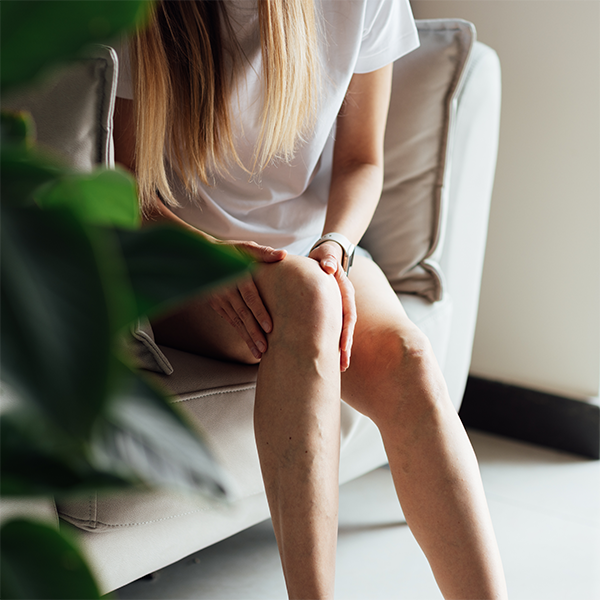What is chronic venous insufficiency?
Arteries bring oxygen-rich blood from your heart to the rest of your body, and veins return oxygen-poor blood back to your heart. When your leg veins cannot pump enough blood back to your heart, you have chronic venous insufficiency (CVI). CVI is also sometimes called chronic venous disease, or CVD. You have three kinds of veins: superficial veins, which lie close to the skin, deep veins, which lie in groups of muscles, and perforating veins, which connect the superficial to the deep veins. Deep veins lead to the vena cava, your body’s largest vein, which runs directly to your heart.
When you are in the upright position, the blood in your leg veins must go against gravity to return to your heart. To accomplish this, your leg muscles squeeze the deep veins of your legs and feet to help move blood back to your heart. One-way flaps, called valves, in your veins, keep blood flowing in the right direction. When your leg muscles relax, the valves inside your veins close. This prevents blood from flowing in reverse, back down the legs. The entire process of sending blood back to the heart is called the venous pump.
When you walk and your leg muscles squeeze, the venous pump works well. But when you sit or stand, especially for a long time, the blood in your leg veins can pool and increase the venous blood pressure. Deep veins and perforating veins are usually able to withstand short periods of increased pressures. However, sitting or standing for a long time can stretch vein walls because they are flexible. Over time, in susceptible individuals, this can weaken the walls of the veins and damage the vein valves, causing CVI.

What are the symptoms?
If you have chronic venous insufficiency, your ankles may swell, and your calves may feel tight. Your legs may also feel heavy, tired, restless, or achy. You may feel pain while walking or shortly after stopping.
Chronic Venous Insufficiency may be associated with varicose veins. Varicose veins are swollen veins that you can see through the skin. They often look blue, bulging, and twisted. Large varicose veins can lead to skin changes like rashes, redness, and sores.
Chronic Venous Insufficiency can also cause problems with leg swelling because of the pressure of the blood pooling in the veins. Your lymphatic system may also produce fluid, called lymph, to compensate for CVI. Your leg tissues may then absorb some of this fluid, which can increase the tendency for your legs to swell. In severe cases, CVI and the leg swelling can cause ulcers to form on the lower parts of the leg.
What causes CVI?
Over the long-term, blood pressure that is higher than normal inside your leg veins causes chronic venous insufficiency. This can lead to damage to the valves, which can further worsen the problem. In some instances, the valves that prevent blood from flowing “backwards,” can be congenitally defective. Other causes of chronic venous insufficiency include deep vein thrombosis (DVT) and phlebitis, both of which cause elevated pressure in your veins by obstructing the free flow of blood through the veins.
DVT occurs when a blood clot (properly called a thrombus) blocks blood from flowing toward the heart, out of a deep or perforating vein. The blood trying to pass through the blocked veins can increase the blood pressure in the vein, which, in turn, overloads your valves. Vein valves that do not work properly are called incompetent because they stretch and no longer work efficiently, and incompetent valves contribute to CVI. DVT is a potentially serious condition that causes leg swelling and requires immediate medical attention because sometimes the blood clots in the veins can break off and travel to the lungs. This condition is called a pulmonary embolus.
Phlebitis occurs when a superficial or deep vein becomes swollen and inflamed. This inflammation causes a blood clot to form, which can also lead to DVT.
Factors that can increase your risk for chronic venous insufficiency include a family history of varicose veins, being overweight, being pregnant, not exercising enough, smoking, and standing or sitting for long periods of time. Although CVI chronic venous insufficiency can affect anyone, your age and sex can also be factors that may increase your tendency to develop CVI; women older than 50 most often get CVI.
Learn more about our chronic venous insufficiency treatments (CVI Treatments) and see our products in Compression Pumps and Compression Wraps by visiting our website or calling us for help at (888) 210-5576.

GET IN TOUCH
Contact our team with interest in or questions about our technology
Spectrum Health representatives are always here 24/7 to help patients and doctors understand their options and make the best choice.
